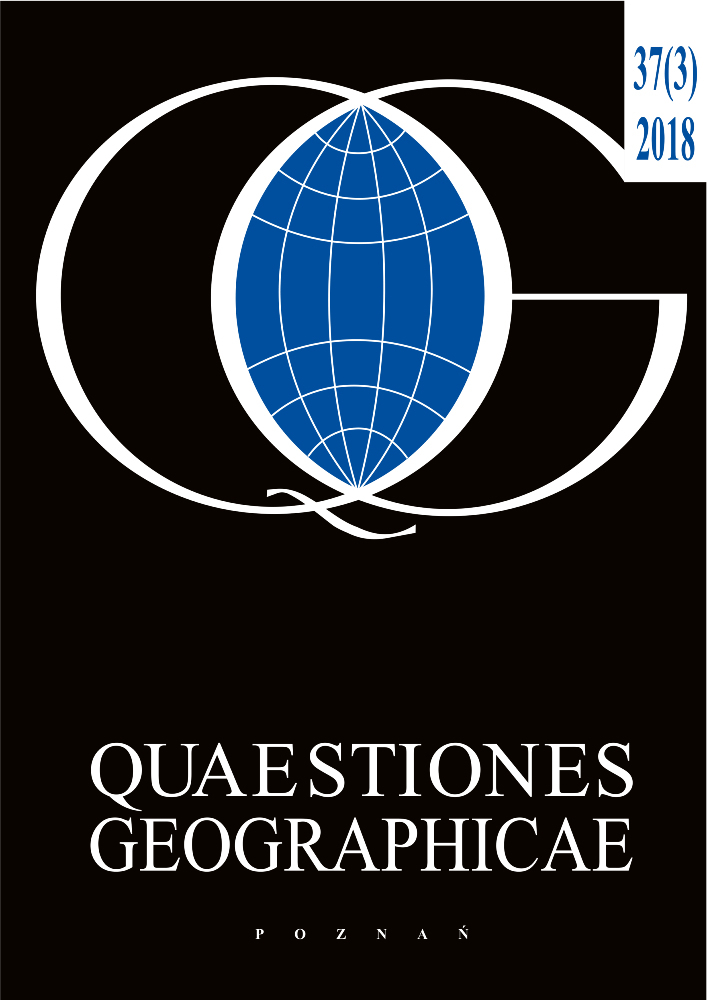Abstract
The paper presents a review of contributions to the scientific discussion on modern methods and tools for public participation in urban planning. This discussion took place in Obrzycko near Poznań, Poland. The meeting was designed to allow for an ample discussion on the themes of public participatory geographic information systems, participatory geographic information systems, volunteered geographic information, citizen science, Geoweb, geographical information and communication technology, Geo-Citizen participation, geo-questionnaire, geo-discussion, GeoParticipation, Geodesign, Big Data and urban planning. Participants in the discussion were scholars from Austria, Brazil, the Czech Republic, Finland, Ireland, Italy, the Netherlands, Poland, the United Kingdom, and the USA. A review of public participation in urban planning shows new developments in concepts and methods rooted in geography, landscape architecture, psychology, and sociology, accompanied by progress in geoinformation and communication technologies. The discussions emphasized that it is extremely important to state the conditions of symmetric cooperation between city authorities, urban planners and public participation representatives, social organizations, as well as residents.References
Arnstein S.R., 1969. A Ladder Of Citizen Participation. Journal of the American Planning Association 35(4): 216 – 224.
Batty M., 2013. Big data, smart cities and city planning. Dialogues in Human Geography 3(3): 274–279.
Bąkowska E., Kaczmarek T., Jankowski P., Zwoliński Zb., Mikuła Ł., Czepkiewicz M., Brudka C., 2016. Geo-questionnaire in urban planning – preliminary results of the experimental application in Poland. Rozwój Regionalny i Polityka Regionalna 35: 37–54.
Bergner B.S., Zeile P., Papastefanou G., Rech W., Streich B., 2011. Emotional barrier-GIS – a new approach to integrate barrier-free planning in urban planning processes. In: M. Schrenk, V.V. Popovich, P. Zeile (eds.), REAL CORP 2011. Changes for Stability – Lifecycles of Cities and Regions. The Role and Possibilities of Foresighted Planning in Tranformation Processes. Proceedings of 16th International Conference on Urban Planning, Regional Development and Information Society: 247–257.
Bishr Y., 1998. Overcoming the semantic and other barriers to GIS interoperability. International Journal of Geographical Information Science 12(4): 299–314.
Carver S., 2001. Participation and Geographical Information. ESF-NSF Workshop on Access to Geographic Information and Participatory Approaches Using Geographic Information, Spoleto, 6–8 December 2001.
Czepkiewicz M., Brudka C., Jankowski P., Kaczmarek P., Zwoliński Zb., Mikuła Ł., Bąkowska E., Młodkowski M., Wójcicki M., 2016. Public Participation GIS for sustainable urban mobility planning: methods, applications and challenges. Rozwój Regionalny i Polityka Regionalna 35: 9–35.
Dunn Ch.E, 2007. Participatory GIS – a people’s GIS. Progess in Human Geography 31(5): 616–637.
Feenberg A., 1999. Questioning Technology. Routledge, New York.
Ghose R., 2001. Use of Information Technology for Community Empowerment: Transforming Geographic Information Systems into Community Information Systems. Transaction in GIS 5(2): 141–163.
Gottwald S., Laatikainen T.E., Kyttä M., 2016. Exploring the usability of PPGIS among older adults: challenges and opportunities. International Journal of Geographical Information Science 30(12): 2321–2338.
Griffin A.L., McQuoid J., 2012. At the Intersection of Maps and Emotion: The Challenge of Spatially Representing Experience. Kartographische Nachrichten 62(6): 291–299.
Jankowski P., 2011. Designing Public Participation Geographic Information Systems. In: T.L. Nyerges, H. Couclelis, R. McMaster (eds.), The SAGE Handbook of GIS and Society. SAGE Publications, London: 347–360.
Jankowski P., Czepkiewicz M., Młodkowski M., Zwoliński Zb., Wójcicki M., 2017a. Evaluating the scalability of public participation in urban land use planning: A comparison of Geoweb methods with face-to-face meetings. Environment and Planning B: Urban Analytics and City Science. DOI: 10.1177/2399808317719709.
Jankowski P., Kaczmarek T., Zwoliński Zb., Bakowska--Waldmann E., Brudka C., Czpkiewicz M., Mikuła Ł., Młodkowski M., 2018. Zastosowanie aplikacji geoankiety i geodyskusji w partycypacyjnym planowaniu przestrzennym – dobre praktyki. Bogucki Wydawnictwo Naukowe, Poznań: 1–81.
Jankowski P., Kaczmarek T., Zwoliński Zb., Mikuła Ł., Wójcicki M., Bąkowska E., Czepkiewicz M., Młodkowski M., Brudka C., 2017b. Narzędzia internetowe w konsultacjach społecznych w planowaniu przestrzennym. Idea, obszary zastosowań i wdrażanie. Wydawnictwo Naukowe UAM, Poznań: 1–58.
Jankowski, P., Czepkiewicz, M., Młodkowski, M., & Zwoliński, Zb. (2016). Geo-questionnaire: A Method and Tool for Public Preference Elicitation in Land Use Planning Piotr. Transactions in GIS, 20(6), 903–924. DOI: 10.1111/tgis.12191.
Kahila-Tani M., 2016. Reshaping the planning process using local experiences: Utilising PPGIS in participatory urban planning. Aalto University publication series Doctoral Dissertations 223.
Kingston R., 1998. Web Based GIS for Public Participation Decision Making in the UK. Empowerment, Marginalisation, and Public Participation GIS. National Centre for Geographic Information and Analysis, Santa Barbara, California, October 14–17th, 1998.
Kwan M.-P., 2008. From oral histories to visual narratives: re-presenting the post-September 11 experiences of the Muslim women in USA. Social & Cultural Geography 9(6): 653–669.
Laituri M., 2003. The Issues of Access: An Assessmnet Guide for Evalualting Public Participation Geographic Information Science Case Studies. URISA Journal 15: 25–32.
Obermeyer N.J., 1998. PPGIS: The evolution of Public Participation GIS. Catography and Geographic Information Systems 25: 65–66.
Pánek J., Kubásek M., Valůch J., Hrubeš M., Zahumenská V., 2014. GeoParticipace: Jak používat prostorové nástroje v rozhodování o lokalitách, ve kterých žijeme? Univerzita Palackého v Olomouci: 1–76.
Perkins C., 2009. Performative and Embodied Mapping. In: R. Kitchin, N. Thrift (eds.), International Encyclopaedia of Human Geography, Elsevier, London: 126–132.
Sieber R.E., 2004. Rewiring for a GIS/2. Cartographica 39(1): 25–39.
Simon H.A., 1976. From Substantive to Procedural Rationality. In: S. Latsis (ed.), Method and Appraisal in Economics, Cambridge University Press, Cambridge: 65–86.
Steinitz C. (ed.), 2012. A Framework for Geodesign: Changing Geography by Design. Redlands, CA: ESRI Press.
Talen E., 1999. Constructing neighborhoods from the bottom up: the case for resident-generated GIS. Environment and Planning B: Planning and Design 24: 533–554.
Wohlwill J.F., 1973. The study of behavioral development. Academic Press, Oxford.
Zyngier C., 2016. Paisagens urbanas possíveis: códigos compartilhados através dos Sistemas de Suporte ao Planejamento e do Geodesign. PhD Thesis, Federal University of Minas Gerais, Brazil.
